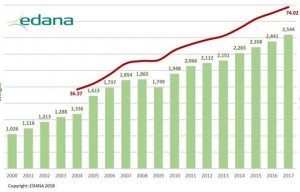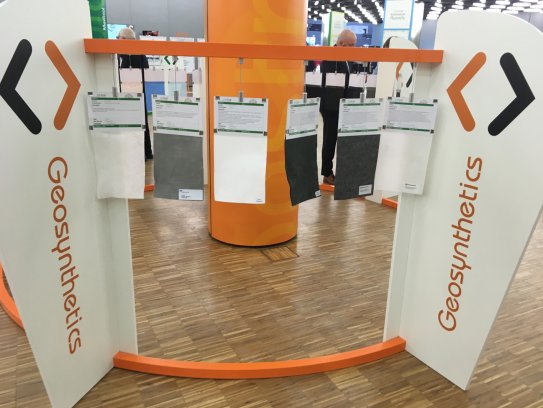
European nonwovens production grows 4.3%
Infrastructural projects and electronics drive 2021 developments.

4th April 2022
Innovation in Textiles
|
Brussels
Nonwovens production in Greater Europe increased in volume by 2% to reach 3,120,967 tons and 87.6 billion square metres in 2021, according to the latest figures from EDANA, the Brussels-based European Disposables and Nonwovens Association.
Since 2019, European output has increased by nearly 9%.
“This 2% average growth is in line with our earlier forecasts,” said Jacques Prigneaux, EDANA’s market analysis and economic affairs director.
Significant growth areas for nonwovens were recorded in building construction (+17.4%), agriculture (+11.3%), electronic materials (+10.1%) and air filtration (+9.1%). Countering this, a further decline of –1% was recorded in automotive interior applications.
“In some market segments, a comparison with the pre-Covid situation is probably more relevant,” Prigneaux said. “This is particularly true in hygiene, medical and wipes nonwovens, which were almost flat or slightly lower than the level reached in 2020, but still much higher than in 2019.”
The production of fibre-based materials, including drylaid, wetlaid, and airlaid, recorded divergent growth rates of +2.4%, +1.1% and –4.8% respectively, and spunmelt nonwovens recorded a growth rate of +3.1%. In drylaid, the highest growth in tons was observed in needlepunched, with a 6.4% increase. The production of drylaid-hydroentangled, which peaked in 2020, was at the same level a year later.
“As we are celebrating 50 years of EDANA support to the sustainable growth of the nonwovens industry, facts and figures in this year’s report illustrate more than ever the benefits for society of nonwoven-based products, from personal and infection prevention products to life-saving filtration media, to electronic applications supporting the transition to e-mobility,” said EDANA’s general manager Pierre Wiertz. “This adds a new dimension to the modest and yet essential role of these annual EDANA statistics – the most comprehensive available in the world – to document this performance and provide a unique source of business intelligence to our member companies, thanks to direct input from producers and exhaustive market insight.”
EDANA’s updated figures for Greater Europe include Western and Eastern European countries, as well as Turkey, Belarus, Russia and Ukraine.

Business intelligence for the fibre, textiles and apparel industries: technologies, innovations, markets, investments, trade policy, sourcing, strategy...
Find out more